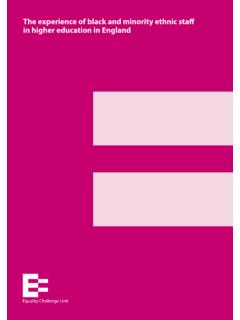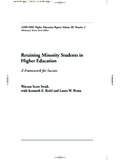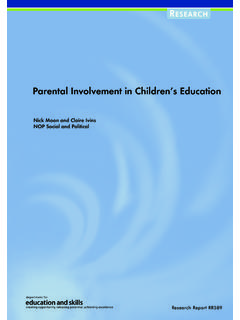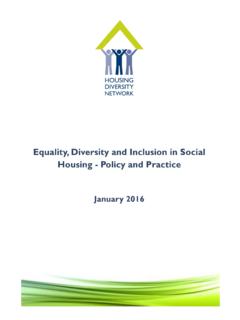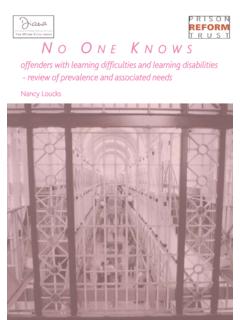Transcription of NEWHAM COLLEGE SELF ASSESSMENT REPORT …
1 1 NEWHAM COLLEGE self ASSESSMENT REPORT 2015 2016 Principal: Di Gowland NEWHAM COLLEGE East Ham Campus High Street South London E6 6ER 2 CONTENTS PAGE 1. Background to the 15/16 SAR 3 1. Introduction to the COLLEGE 3 2. Overall effectiveness 7 3. Overall grade profile 15/16 9 4. Key strengths 9 5. Key areas for improvement 10 6. Percentage of enrolments on qualifications in 15/16 by notional level and age 11 7. Summary of SSA, FTEs & self - ASSESSMENT grades 15/16 12 8. Summary of Support Area self - ASSESSMENT grades 15/16 13 9. Impact of actions that have been taken in 15/16 to improve the provision 14 10.
2 Effectiveness of leadership and management 15 11. Quality of teaching, learning and ASSESSMENT 30 12. Personal development, behaviour and welfare 34 13. Outcomes for students 42 14. Main priorities for 16/17 to ensure further improvement take place 52 15. COLLEGE data tables, including EDIM data tables 53 3 BACKGROUND TO THE 15/16 SAR The 15/16 SAR has been a year-long process and all staff within the COLLEGE have been involved in its production. Throughout the year each department, support and academic, update the Quality Improvement Plan on a monthly basis which then feeds into the departmental SAR.
3 Each department presents their draft SAR two to three times to a panel chaired by the Deputy Principal Curriculum and Quality. The departmental SAR is then signed off and grade is confirmed. The SARs are then used to produce the overall COLLEGE SAR. The overall SAR is then moderated by the Executive plus two external representatives before it goes to the ASPC and the full Governing Body in December. INTRODUCTION TO THE COLLEGE NEWHAM COLLEGE is a large general further education COLLEGE which operates within the East London Borough of NEWHAM from two main campuses, located at East Ham and Stratford, in addition it has a network of local learning centres and learning partnerships.
4 The COLLEGE s strategic priority is to provide relevant skills and training for local people to ensure their full participation in the employment and educational opportunities that are developing in NEWHAM , East London and London as a whole. The COLLEGE caters for students of all ages from 14 years of age and offers courses from entry through to degree level programmes. A range of social indices confirm that many of the borough s residents are faced with a number of extreme socio-economic challenges: Population The London Borough of NEWHAM s projected population for mid-year 2016 is 338,6001; by 2031 the population is projected to be 407,1002 and by 2039 the population of NEWHAM is projected to be 433,7003 an increase of 95,100 people.
5 This is a projected increase of 28% from 2016 to 2039, compared to in 1 This figure is rounded to the nearest hundred, and for the mid-year point of 2016. The source is the Greater London Authority s 2015 round of Demographic Projections; variant SHLAA-based population projections, Capped Household Size model, short-term migration scenario. 2 This figure is rounded to the nearest hundred, and for the mid-year point of 2016. The source is the Greater London Authority s 2015 round of Demographic Projections; variant SHLAA-based population projections, Capped Household Size model, long-term migration scenario.
6 3 This figure is rounded to the nearest hundred, and for the mid-year point of 2016. The source is the Greater London Authority s 2014 round of Demographic Projections; variant SHLAA-based population projections, Capped Household Size model, long-term migration scenario. 4 London overall; based on this figure NEWHAM has the fourth fastest population NEWHAM has a high population turnover of around 19%. It is estimated that 65,289 people, 19% of the population, either left or arrived into the borough during 2015 (this does not include births and deaths).5 NEWHAM has the highest proportion of Black and Minority Ethnic (BME)6 residents in London, making up of the population based on projected mid-2016 Based on the same projection Indian is the largest group with a 15% share, followed by Bangladeshi ( ), Black African ( ) and Pakistani ( ).
7 2011 UK Census data showed there was huge diversity in NEWHAM s population for example of NEWHAM s population defined themselves as white other (not British, Irish or Gypsy/ Irish Traveller). Nino data contained in the Greater London Authority s borough showed that the largest migrant population arriving in NEWHAM for 2014/15 was Romanian, followed by Bulgarian and then Indian. This provides an insight into the diversity of NEWHAM residents and the changing nature of the population. The 2015 English Indices of Deprivation was published on 30th September 2015 by the Department for Communities and Local Government. The Indices of Deprivation 2015 provide a set of relative measures of deprivation for small areas (Lower-layer Super Output Areas) across England, based on seven domains of deprivation.
8 The domains were combined (using weightings) to produce the overall Index of Multiple Deprivation (IMD). NEWHAM was ranked 25th in 2015 for Rank of Extent and 8th for Rank of Average Rank; this is a significant positive movement in five years. For more information please visit: A overview for NEWHAM has also been produced please use this link: Despite these multiple deprivations, it is widely acknowledged that NEWHAM is a dynamic and thriving area, offering enormous potential as a place to live and work. 4 Please note the City of London has a faster growing population but has a very small population overall.
9 5 Source: Components of Change, published as part of the Office for National Statistics mid-2016 population estimates. 6 Please see the definition of BME used for this projection, for example those who define themselves as white other are grouped with the white British and white Irish categories to make a white group. 7 The source is the Greater London Authority s 2015 round of Demographic Projections; SHLAA-based ethnic group projections, Capped Household Size, short-term migration scenario. 5 In 2015 /16, the COLLEGE recruited a total of 13,672 students See table below. Student Type Students 16-18 Apprenticeship 160 16-19 High Needs Students 63 16-19 Students (excluding High Needs Students) 1669 19-23 Apprenticeship 348 19-24 Students with an LDA or EHCP 154 24+ Apprenticeship 2548 24+ Loan 424 Classroom Learning 6898 ESF 0 HE 735 Non-Funded Fee Payer 487 Pre-16 142 Workplace Learning 5 Traineeships 39 Supported Internships 12 The COLLEGE s annual turnover for 15/16 was approximately 42m; 21% of funding was derived from the EFA; 37% from the SFA; and the remainder from HE courses and students fee income.
10 Approximately 14% of the COLLEGE s income was generated by 19 sub-contracted partners, delivering mainly apprenticeships. In 15/16, the COLLEGE employed 350 salaried staff, 59 of whom were on temporary contracts. The COLLEGE gained reaccreditation of Investors in People Gold and Investors in Diversity during 15/16. It also holds kite-marks in: Positive about Disability; Age Positive Champion; Stonewall Diversity Champions; and Mindful Employers. The executive board is made up of 5 members with two deputy principals who joined the board in 2015 . The COLLEGE leadership team has 21 members. The 2016 Ofsted inspection confirmed that the COLLEGE has maintained its Good status and continues to build on many strengths, these being: very high achievement rates for the large cohort of adult students; the welcoming, safe and vibrant atmosphere of the COLLEGE ; strong academic and personal support for students which helps to motivate them and ensures they keep up to date with their work; a significant number of students progress into employment or further study including 6 higher education; highly responsive to local employment opportunities; a very productive involvement in many local and regional regeneration projects.
